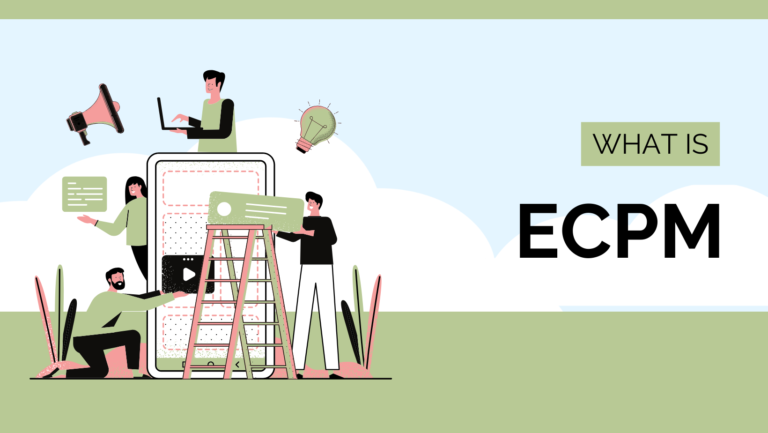What’s The Ideal Blog Post Length For SEO?
In the expansive realm of digital marketing and SEO, one question reverberates through the minds of content creators and marketers alike: Does the length of a blog post truly impact its SEO performance? As algorithms evolve and search engine preferences shift, it’s imperative to delve into the intricacies of blog post length and its correlation to SEO efficacy. By unraveling this enigma, we can uncover the strategies that wield the power to propel your content to the forefront of search engine results pages.
Does Blog Post Length Truly Matter for SEO?
Navigating the multifaceted landscape of content creation, we encounter a ceaseless debate: is length a pivotal factor for SEO success? The elusive answer lies within the data. Numerous statistical analyses have suggested a strong correlation between longer blog posts and higher search engine rankings. However, correlation isn’t tantamount to causation. To comprehensively understand the dynamics, it’s crucial to dissect the factors that contribute to this apparent correlation.
Search engines like Google continuously refine their algorithms to prioritize user-centric content. While length is a component of the equation, the focus gravitates toward content quality, relevance, and the degree to which it caters to user intent. In this intricate dance between length and quality, we embark on a journey to decipher the true significance of blog post length for SEO. Amidst the often-asked question, “How long should a blog post be,” it’s imperative to recognize that optimal length isn’t just a fixed number but rather the balance between depth, information, and engagement.
Google’s say on Blog Post Length
Venturing into the very heart of digital exploration, we turn to Google – the ultimate arbiter of online content. Surprisingly, Google refrains from imposing a strict word count criterion. Instead, it underscores the importance of providing users with comprehensive, valuable, and relevant information. Google’s algorithms are designed to discern user satisfaction, gauging metrics like time-on-page, click-through rates, and bounce rates.
In essence, Google’s stance underscores the symbiotic relationship between length and engagement. Longer blog posts have the potential to delve into intricate subjects, but the true essence lies in crafting content that resonates with readers, addresses their queries, and extends an immersive experience. This ethos aligns with Google’s mission of delivering enriched search results that meet user expectations.
What is the Optimal Blog Length for Different Types of Content?
The ideal word count for different types of content varies based on several factors such as reader engagement, content depth, and platform preferences. Here’s a breakdown:
1. Listicles:
– Ideal Word Count: 1,500 – 2,500 words
– Reasoning: Listicles often cover multiple points or ideas in a concise yet informative manner. Longer listicles can provide detailed insights and maintain reader engagement if the content remains focused and valuable.
2. How-to Guides/Tutorials:
– Ideal Word Count: 2,000 – 3,000 words
– Reasoning: How-to guides require step-by-step instructions and in-depth explanations. The word count should cover each step thoroughly, including visuals or examples for clarity.
3. Opinion Pieces/Editorials:
– Ideal Word Count: 800 – 1,500 words
– Reasoning: Opinion pieces should be concise enough to maintain reader interest while expressing a clear viewpoint. They should present arguments logically without unnecessary wordiness.
4. Case Studies:
– Ideal Word Count: 1,500 – 3,000 words
– Reasoning: Case studies require detailing the problem, solution, and results. Longer word counts allow for comprehensive coverage, including data, analysis, and insights.
5. Product Reviews:
– Ideal Word Count: 800 – 1,500 words
– Reasoning: Reviews should cover key features, benefits, and drawbacks concisely. Longer reviews can include personal experiences or comparisons, enhancing their value.
6. Long-Form Articles/Deep Dives:
– Ideal Word Count: 3,000 – 5,000+ words
– Reasoning: Long-form articles delve deep into complex topics, offering comprehensive insights and analyses. They cater to readers seeking in-depth information or extensive research on a subject.
7. News/Short Updates:
– Ideal Word Count: 300 – 800 words
– Reasoning: News updates should be brief and to the point, conveying essential information quickly. These pieces cater to readers seeking immediate updates without extensive details.
8. SEO Content/Blog Posts:
– Ideal Word Count: 1,000 – 2,000 words
– Reasoning: SEO-driven content often performs well within this range. It allows for proper keyword integration, in-depth information, and readability, catering to both search engines and human readers.
9. Social Media Posts/Captions:
– Ideal Word Count: 50 – 150 words
– Reasoning: Social media content requires brevity to capture attention quickly. Concise yet impactful content works best for engaging audiences on platforms like Twitter, Instagram, and Facebook.
It’s important to note that while these word counts serve as general guidelines, quality should always outweigh quantity. Content should be engaging, informative, and relevant to the audience’s needs, ensuring that the reader’s experience remains the top priority. Adapting the word count based on the topic’s complexity and the audience’s preferences is key to creating compelling and impactful content.
SEO Best Practices for Blog Length
Optimizing content length for SEO involves finding a balance between providing comprehensive information and maintaining reader engagement. Here are some tips:
1. Focus on Quality Content:
Quality content is the cornerstone of effective SEO. It’s about providing value to readers. Aim to create content that is well-researched, informative, and engaging. Focus on addressing the user’s query comprehensively. High-quality content tends to attract more backlinks, social shares, and longer dwell times—all of which positively impact SEO.
2. Consider Topic Relevance:
Understand the search intent behind a topic. Some queries require detailed, in-depth coverage, while others might suffice with succinct answers. Analyze what your target audience is looking for and cater to their needs. The goal is to match your content length with the depth of the topic.
3. Diversify Content Length:
Vary content length based on the subject matter. While long-form content might be ideal for complex topics or guides, shorter pieces like FAQs or news updates can cater to specific queries or timely information needs. Diversifying content lengths helps in addressing a wider range of user queries.
4. Long-Form Content for Authority:
Long-form content often ranks well in search engines. Consider creating pillar pages or cornerstone content with extensive coverage—around 1,500 – 2,500+ words—for topics central to your industry or expertise. Long content establishes authority, offering detailed insights that can become go-to resources for users and search engines alike.
5. Use Headers and Formatting:
Break down longer content with headers, subheadings, bullet points, and lists. Clear formatting not only improves readability but also helps search engines understand the structure and hierarchy of your content. This enhances SEO by making your content more scannable and user-friendly.
6. Keyword Integration:
Incorporate relevant keywords naturally throughout your content. Long-form content provides more opportunities to include variations of your target keywords. Aim for keyword placement that feels organic and supports the flow of the content—avoiding overstuffing or unnatural usage.
7. Mobile Optimization:
Ensure that longer content remains engaging and readable on mobile devices. Use shorter paragraphs, clear formatting, and engaging visuals to maintain user interest. Mobile-friendly content contributes to better user experience, which is a key factor in SEO rankings.
8. Monitor User Engagement:
Analyze metrics like time on page, bounce rates, and scroll depth. These metrics offer insights into how users interact with your content. Longer dwell times and deeper engagement often indicate that your content aligns well with user interests. Adjust content length based on these insights.
9. Be Consistent:
Maintain consistency in content length across similar topics or categories on your website. Consistency helps establish expectations for your audience. If certain types of content consistently perform better at different lengths, consider adapting your content strategy accordingly.
10. Regularly Update Content:
Content freshness is essential for SEO. Regularly revisit and update existing content to keep it relevant and accurate. Incorporate new information, trends, or data to maintain the value and authority of your content in the eyes of search engines.
By implementing these strategies, you can optimize content length to enhance SEO performance while ensuring that your content remains valuable, engaging, and relevant to your audience’s needs.
Quality over Quantity: The True SEO Champion
Diving into the depths of content creation, we uncover the essence of quality over quantity. The digital arena is inundated with information, but it’s the content that provides genuine value that rises above the noise. Long-form content is a canvas that enables creators to explore topics comprehensively, but its efficacy rests upon its ability to captivate, educate, or entertain.
By instilling value within every word, you craft content that fosters reader engagement, stimulates social sharing, and nurtures backlinking – all integral components of an SEO-friendly piece. The synergy between content quality, length, and relevance molds an experience that resonates with readers and search engines alike.
Audience-Centric Approach: Mapping Your Persona-Laden Journey
As the tapestry of content unfolds, an audience-centric approach emerges as a guiding light. Personalization is key – understanding your target audience, their needs, and their preferred modes of engagement. By creating reader personas and intertwining them with strategically placed keywords, you forge a connection that transcends the algorithmic confines of search engines.
The journey is multifaceted – from crafting content that aligns with user intent to weaving in long-tail keywords that cater to specific queries. This approach elevates content from mere words on a screen to a tailored solution that addresses real-life concerns and queries, thus harmonizing with Google’s mission of delivering user-centric results.
Beyond Words: Expanding Horizons Beyond Written Copy
In an era that embraces multimedia, content creation extends far beyond the realm of written text. While the written word remains a formidable force, visual elements, videos, infographics, and interactive features enrich the user experience, fostering engagement and augmenting comprehension.
Imagine a blog post discussing “dinar recaps blog” or delving into the world of “oh em gee blog.” By interspersing compelling visuals and immersive interactive features, you immerse users in an experience that extends beyond the confines of text. This multimedia approach enhances user engagement, prolongs time-on-page, and signifies to search engines that your content is a valuable resource worthy of recognition.
Concluding the Odyssey: Weaving it All Together
The crescendo of this exploration amplifies a resounding truth: blog post length isn’t a solitary determinant of SEO success. It’s a symphony of variables – quality, relevance, user engagement, and strategic alignment with audience intent. While adhering to a minimum of 1500 words nurtures long-form content ideals, the spotlight remains steadfastly on delivering content that enriches user experiences and addresses their needs.
So, whether you’re delving into the intricacies of a “dinar recaps blog” or uncovering the treasures of the “oh em gee blog,” remember that content’s potency extends beyond word count. It’s the seamless orchestration of SEO optimization and compelling storytelling that ultimately elevates your content, capturing both the hearts of readers and the attention of search engines.
FAQs
- Q: Is there an ideal word count for a blog post to rank well in search engines?
A: While there’s no universal magic number, longer blog posts (around 1,500 to 2,500 words) tend to perform better in terms of SEO. However, focus on delivering value and addressing the topic comprehensively rather than fixating solely on word count.
- Q: Can shorter blog posts still rank effectively in search results?
A: Yes, shorter posts can rank well if they provide concise, valuable information. Google values content that matches user intent, so if a shorter post effectively answers a query, it can rank highly.
- Q: How do blog post length recommendations vary across different niches?
A: Blog post length can vary based on the complexity of the topic and the preferences of your target audience. In-depth, comprehensive content tends to perform better across most niches, but certain industries may prefer shorter, to-the-point articles.
- Q: Do readers engage differently with short and long blog posts?
A: Reader engagement depends on content quality and relevance. Longer posts have the potential to provide more depth and value, keeping readers on the page longer. Shorter posts might have higher bounce rates if they fail to meet reader expectations.
- Q: Can a mix of short and long blog posts benefit my website’s SEO?
A: Yes, a diverse content strategy can be effective. A mix of short, snackable posts and longer, comprehensive articles can cater to different user preferences. Prioritize quality and relevance in both types of posts to maintain a balanced approach.
Remember that while blog post length is important, it’s just one aspect of a successful SEO strategy. Prioritize delivering high-quality content that meets user intent, provides value, and keeps readers engaged, regardless of the length.







